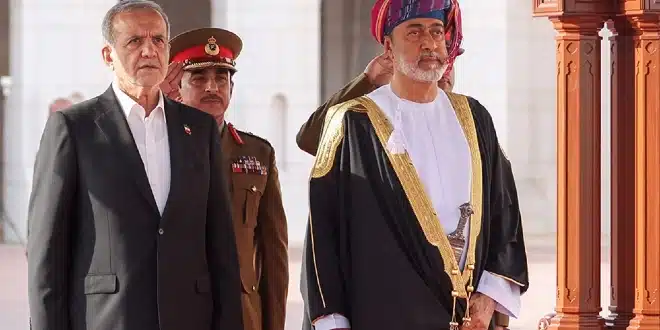Iran has indicated it may be willing to allow inspectors from the United States to access its nuclear facilities under the oversight of the International Atomic Energy Agency (IAEA), provided a new agreement is successfully negotiated with Washington. The development marks a notable shift in Tehran’s longstanding policy of excluding inspectors from nations it considers adversarial.
This potential concession was outlined by Iran’s nuclear chief, Mohammad Eslami, who stated that while Iran has historically declined inspection requests from countries it views as hostile or lacking impartiality, it would reconsider that stance if a deal is reached and Tehran’s conditions are met. The statement comes amid an active phase of diplomacy between the United States and Iran, which have engaged in five rounds of high-level nuclear discussions in recent weeks—their most direct interaction since 2018.
In that year, the United States, under then-President Donald Trump, withdrew from the 2015 Joint Comprehensive Plan of Action (JCPOA), reimposing broad sanctions on Iran. Since returning to office in January, Trump has reinstated the “maximum pressure” strategy, which includes fresh sanctions aimed at isolating the Islamic Republic economically and politically.
Enrichment Standoff and Diplomatic Mediation
Despite the resumption of talks, a core issue remains unresolved: uranium enrichment. Iranian officials have maintained that the country’s right to enrich uranium is not up for negotiation. This position has been reinforced by multiple officials, including Foreign Ministry spokesman Esmaeil Baqaei, who described enrichment as a fundamental and inseparable part of Iran’s nuclear program. Any proposals perceived to weaken or revoke this right have been firmly rejected.
Eslami further clarified that the percentage of enrichment should be determined by technical and industrial requirements, not political considerations. He argued that producing highly enriched uranium does not automatically imply intentions to develop nuclear weapons. Iranian enrichment currently reaches levels of up to 60 percent purity—well below the 90 percent threshold required for weaponization but significantly higher than the 3.67 percent cap stipulated by the original 2015 deal.
U.S. negotiators, including Washington’s representative Steve Witkoff, have echoed their opposition to any Iranian enrichment activity, identifying it as a red line in ongoing talks. This position continues to be a central obstacle to achieving a renewed accord.
Diplomatic efforts have been supported by Oman, which has hosted Iranian President Masoud Pezeshkian and Foreign Minister Abbas Araghchi during recent official visits. Both expressed appreciation for Oman’s role in facilitating dialogue between the two adversaries, who have not maintained direct diplomatic ties since the 1979 Islamic Revolution.
Araghchi, who serves as Tehran’s chief negotiator, said that discussions are progressing and that the date and location for the next round of talks could be announced shortly. Oman is expected to release details once logistical arrangements are confirmed.
International Implications and Potential Sanctions Snapback
While the U.S. and Iran remain engaged in bilateral negotiations, the European signatories to the JCPOA—France, Germany, and the United Kingdom—are monitoring the situation closely. These countries are reportedly evaluating whether to invoke the agreement’s snapback mechanism. This clause allows for the automatic reimposition of United Nations sanctions in the event of Iranian non-compliance with the nuclear accord’s terms.
Tehran has repeatedly warned against activating the mechanism, stating that such a move would have serious consequences for regional stability and international diplomacy. Iranian officials argue that their current enrichment activities are within sovereign rights and claim that their nuclear program remains focused on peaceful objectives, such as medical isotopes and energy production.


